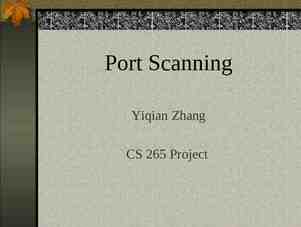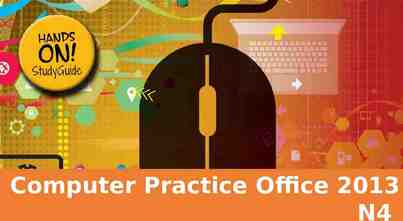Bangladesh National Digital Architecture (BNDA) Accomplished Tasks,
29 Slides5.07 MB
Bangladesh National Digital Architecture (BNDA) Accomplished Tasks, Achievement and Utilization bnda.gov.bd
Agenda Bangladesh National Digital Architecture (BNDA) Modules of National Digital Architecture Progress and Accomplished Tasks Achievements Way Forward How ministries/agencies can be benefitted? Challenges and Support required
Bangladesh National Digital Architecture It’s a branding for the National Enterprise Architecture (NEA) related activities It includes all activities needed to design and implement National Enterprise Architecture w.r.t Whole-Of-Govt approach for Digital Bangladesh To keep pace with Vision 2021: ‘Digital’ Bangladesh activities
What is National Enterprise Architecture? What does EA imply for Government of Bangladesh? Digital Bangladesh vision envisages the transformation of Governance to e-Government wherein ICT will be leveraged to all aspects of governance to improve efficiency and effectiveness of public policy implementation and delivery of Government services. National Enterprise Architecture (NEA) is a strategic planning process that translates Whole-of-Government business vision and strategy into effective Government transformation. Improved Governance Coordination and collaboration Cost optimization Standardization Re-usage Matured systems Inclusive development
Architecture Domains under Bangladesh NDA Business Common approach towards visualization and realization of Govt activities Data Data is owned by individual Government bodies and will be reusable. Security Operations Governance In Compliance with TOGAF framework. Technology Mobility Interoperability Application Data Business Application Introduce shared services and systems Interoperability Enable exchange of data and services intra-Government and organization Mobility mobile communication technologies has created new platform for Governments Technology Multiple ICT infrastructure (DC DR) and networks Security Cyber security is a key area of concern being ignored by Ministries
NDA Modules Policies and Roadmap Standards and Guidelines for ICT Procurement NDA Portal and Repository Architecture maturity tool Governance Framework NDA Bus and Services
Progress and Accomplished Tasks Design and Architecture of BNDA Framework BNDA Portal and Repository National e-Service Bus Implemented e-Service integration with National e-Service Bus Citizen Authentication Service e-Recruitment System GeoDASH Platform Pay Fixation System Food Procurement for Ministry of Food e-Pension for Directorate of Primary and and Mass Education Integration of NID database with National Service Bus Architecture Maturity Assessment Tool
Progress and Accomplished Tasks (Contd.) ICT Roadmap preparation for Govt Offices Training and awareness DG Food Office Directorate of Primary and and Mass Education ICT Division 100 GoB officials are trained on Enterprise Architecture as per National University of Singapore curriculum 12 days long training on WSO2 platform for 25 peoples (GoB,Industry) Association of Enterprise Architects (AEA) local chapter formation Legal activities- Procurement Act Correction, BNDA guideline & act (draft) BNDA and Social media
President Award from The Open Group BCC won THE PRESIDENT’S AWARD 2018 from The Open group in ‘Government Enterprise Architecture’ category
WSIS 2019 WINNER Award BCC won WINNER AWARD in WSIS Prizes 2019 from International Telecommunication Union (ITU) in ‘C6: Enabling Environment’ category
Principles, Standards, Guidelines and Reference Models Principles and standards for major architectural domains Guidelines Business, Data Application Technology Security Interoperability Mobility Suggested specifications for ICT goods procurement Reference Models generic architecture artifact which may be reused or configured
BNDA portal and repository is an online tool to provide real-time support to ministries and organizations to avail the architecture documents and references to prepare their roadmap The NDA repository will include: Principles Standards Architecture reference models Architecture development process and life cycle Architecture development guidelines and techniques Artefacts template Sample EA artefacts for reusability EA design, roadmap, architecture reference models for respective ministries Architecture maturity assessment tool NDA Bus gateway and registrations process Research and discussion forums
e-Service Bus is a critical component and key to ensure interoperability, availability and reusability of government online services A middleware platform to ensure seamless integration and exchange of information Several services are connected as of now Citizen authentication service e-Recruitment System Geospatial data Platform DLS (Distributed Ledger System) Platform Pay fixation System Alapon messenger app e-pension service for primary school teacher Foodgrain procurement from miller/farmer more services are in pipeline
GOVT WEBSITES PORTALS BANKS TELECOM PENSION CITIZEN AGRICULTURE FARMER RELATED SCHEMES FOOD PROCUREMENT SOCIAL SCHEMES DEVELOPMENT APPLICATION S Process Simplification using NDA Service Bus SIM REGISTRATI ON E-PENSION FOOD PROCUREM ENT SYSTEM NID BIRTH & DEATH REGISTRATI ON LAND MANAGEME NT
Case 1: Reusing Citizen Authentication service It’s based on NID database, verifies authenticity of a citizen It returns 10-12 info – Name, Father name, Photo, DoB, Address etc Citizen Authentication service has been used 55,24,000 times via e-service bus Citizen authentication service variations Citizenship verification by NID and DoB Citizen basic profile by NID Biometric verification of citizen More services in pipeline for consuming service e-GP system e-Governance ERP system Pilgrim Management System Polli Soncoy Bank
Reusing Citizen Authentication service 1 2 Verification Request to bus Verification Request to NID . 4 Verification Result from bus NID Database National e-service bus . 3 Verification Result from NID
Case 2: Integration with BCC Blockchain/DLS Platform Private Blockchain Infrastructure, owned by BCC Can be used to store data/info to prevent fraud/forgery and strengthen data security It will remain private due to security reason and expose API via e-service bus 2 systems are connected on pilot basis eRecruitment System : to store admit card for recruitment exam BKIICT Training management System: to store training certificate Based on the piloting result, DLS platform will be upgraded as Blockchain service
Integration with BCC Blockchain/DLS Platform 1 2 Certificate info submit to bus Certificate info submit to DLS . 4 Repository hash return from bus DLS Platform National e-service bus . Repository Hash : 0xa1f4c816bca7ddc45a1129ed1d4bca9d0b01d2c669f9b303e5123b99301df5a9] 3 Repository hash return from DLS
Case 3: GeoDASH Platform Integration A unique Govt. Platform to share and collaborate geospatial data 2 options to interact – Owned by BCC, developed by WB Geospatial data management and visualization Multiple layers of geospatial data and mixing of layers GIS map publishing, point-to-point distance GUI (Graphical User Interface) and API (Application Programming Interface) GeoDASH API is integrated with National e-service bus! GeoDASH consumer can utilize API to interact programmatically
Case 4: Integration with NID and Foodgrain Procurement System Web Based application software to manage & control crop procurement activities from internal market Stakeholders: Farmers,Upazilla Agriculture Officer CSD/LSD Department of Agriculture Extension (DAE) DG Food Office 2,50,000 farmers’ registration request (from 79 upazillas) is verified via eservice bus Page 20
WQSC verification 1 4 Page 21 Certificate info submit to bus Repository hash return from bus 2 . Certificate info submit to DLS National e-service bus . 3 Repository hash return from DLS DLS Platform
ICT Roadmap is required for designing the future Digital Bangladesh architectural blueprint now Assessment of current state and architecture maturity Gap identification from current state and target state Initiatives to be undertaken by the organization Comprises of Consolidate list of initiatives Master plan for implementation of the initiatives Prioritization Assessment Timelines Indicative Budgetary Requirements ICT Components Risks Skills Requirements
An online architecture maturity tool would be made available to enable ministries and organizations to assess their maturity and growth e-Government Web presence, interaction, transaction, integration, transformation Architecture elements Process, development, business linkages, senior management participation, operating unit participation, architecture communication, IT security, architecture governance, IT investment and strategy, interoperability, mobility, reusability Architecture domain Business, data, application, technology, security, mobility, interoperability
Governance Model custodian of the BNDA framework and its inter-alia components like BNDA portal, repository and tools An effective NDA governance and reporting structure would be essential for sustainability of the process a dedicated working team would be required which would be primarily responsible for governance, coordination and research and development promotion and capacity development 2 tier structure has been proposed Apex committee Technical committee
Way Forward and Future Scope of Improvement Next Phase of activities . Long-term Establishment of WOG (Whole-Of-Government) approach Formulate Strategy for establishing WOG (Whole-Of-Government) platform i.e. large scale implementation of NDA framework Collect data regarding current state of ministries/departments and assess maturity in terms of EA establishment Prepare tactical plans for technical, operational and financial sustainability of WOG Platform Analyze and Prepare specifications for integrated digital services Short-term Developing cross-cutting e-services, Integrating more e-services with e-service bus Conduct National workshops and awareness seminar Online/web-based tool for EA maturity assessment, Smartphone app for BNDA HA (High Availability) infrastructure for BNDA Citizen authentication service for all Govt Organizations
How a govt organization can be benefitted? Following Standards for development of citizen services Following specifications for ICT systems procurement Reusing an existing citizen service Assess architecture maturity Development of ICT Roadmap Conduct Architectural review of ICT based system/services
Standards Overview
Challenges and support required Country-wide adoption of NEA Support of Senior Leadership Mandate and Regulations Capacity Development Skilled EA resources Compliance to Standards
Scalable Reliable Secure open data standards maturity complexity whole-of-government citizen-centricity expanding usage transparency accountability convenience efficiency open standards models ICT policy and standards strategy Reference design BNDA function security enterprise of enterprises e-gif technology mobility interoperability business data Enterprise architecture e-Governance Multi-Channel Service Delivery Vision 2021 Digital Nation Bridging the digital gap application g2c g2b g2g g2e business process system structure


































